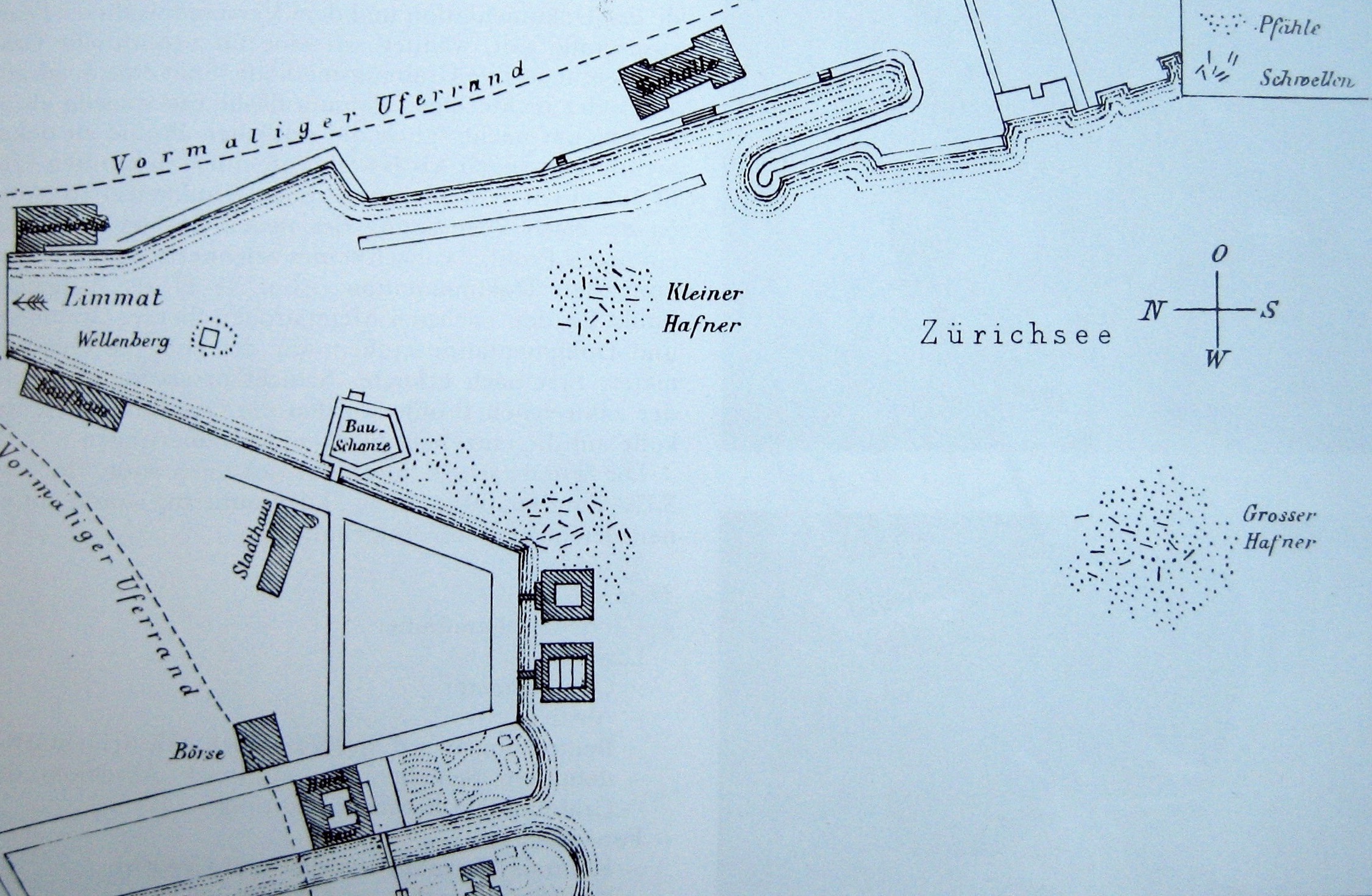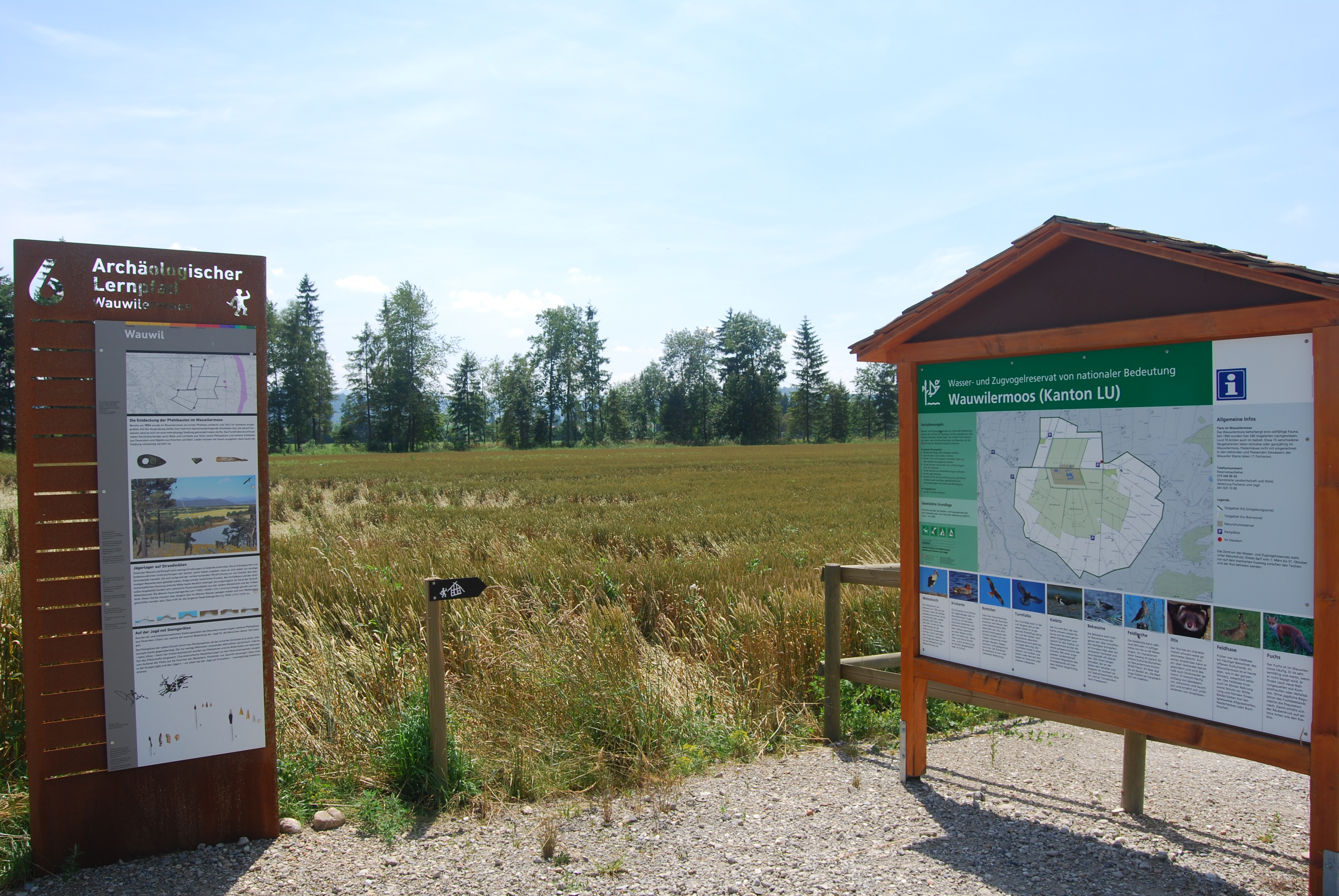|
Kleiner Hafner
Kleiner Hafner is one of the 111 serial sites of the UNESCO World Heritage Site '' Prehistoric pile dwellings around the Alps'', of which are 56 located in Switzerland. Geography Kleiner Hafner was located on the then swamp land between the river Limmat and Zürichsee around Sechseläutzenplatz on a small peninsula in Zürich, and as well as the other Prehistoric pile dwellings around Zürichsee set on piles to protect against occasional flooding by the rivers Linth and Jona. The settlement is located on '' Zürichsee'' lakeshore in Enge, a locality of the municipality of Zürich. It was neighbored by the settlements Zürich–Enge Alpenquai and Grosser Hafner on a then island in the effluence of the Limmat, within an area of about in the city of Zürich. The site Kleiner Hafner comprises , and the buffer zone including the lake area comprises . History The site is internationally known since 2009, when during the beginning of the construction of the underground parki ... [...More Info...] [...Related Items...] OR: [Wikipedia] [Google] [Baidu] |
UNESCO World Heritage Site
World Heritage Sites are landmarks and areas with legal protection under an treaty, international treaty administered by UNESCO for having cultural, historical, or scientific significance. The sites are judged to contain "cultural and natural heritage around the world considered to be of outstanding value to humanity". To be selected, a World Heritage Site is nominated by its host country and determined by the UNESCO's World Heritage Committee to be a unique landmark which is geographically and historically identifiable, having a special cultural or physical significance, and to be under a sufficient system of legal protection. World Heritage Sites might be ancient ruins or historical structures, buildings, cities, deserts, forests, islands, lakes, monuments, mountains or wilderness areas, and others. A World Heritage Site may signify a remarkable accomplishment of humankind and serve as evidence of humanity's intellectual history on the planet, or it might be a place of grea ... [...More Info...] [...Related Items...] OR: [Wikipedia] [Google] [Baidu] |
Zürich–Enge Alpenquai
Zürich–Enge Alpenquai is one of the 111 serial sites of the World Heritage Site, UNESCO World Heritage Site ''Prehistoric pile dwellings around the Alps'', of which 56 are located in Switzerland. Geography Located on the then-swampland between Limmat and Lake Zurich around Sechseläutenplatz, Zürich, Sechseläutzenplatz on small islands and peninsulas in Zürich, the settlements were set on piles to protect against occasional flooding by the Linth and Jona (river), Jona Rivers. Because the lake has grown in size over time, most of the original piles are now around to under the water level of , giving modern observers the false impression that they always had been underwater. Zürich–Enge Alpenquai is located on ''Lake Zurich'' lakeshore in Enge (Zürich), Enge, a locality of the Municipalities in the canton of Zürich, municipality of Zürich in the Canton of Zürich in Switzerland. The settlement comprises , and the buffer zone, including the lake area, comprises in al ... [...More Info...] [...Related Items...] OR: [Wikipedia] [Google] [Baidu] |
History Of Zurich
Zurich has been continuously inhabited since Roman times. The vicus of '' Turicum'' was established in AD 90, at the site of an existing Gaulish ( Helvetic) settlement. Gallo-Roman culture appears to have persisted beyond the collapse of the Western empire in the 5th century, and it is not until the Carolingian period. A royal castle was built at the site of the Lindenhof, and monasteries are established at Grossmünster and Fraumünster. Political power lay with these abbeys during medieval times, until the guild revolt in the 14th century which led to the joining of the Swiss Confederacy. Zurich was the focus of the Swiss Reformation led by Huldrych Zwingli, and it came to riches with silk industry in Early Modern times. Early history Numerous lake-side settlements from the Neolithic and Bronze Age have been found, such as those in the Zürich Pressehaus and Zürich Mozartstrasse. The settlements were found in the 1800s, submerged in Lake Zurich. Located on the then swam ... [...More Info...] [...Related Items...] OR: [Wikipedia] [Google] [Baidu] |
Prehistoric Pile Dwellings In Switzerland
Prehistory, also called pre-literary history, is the period of human history between the first known use of stone tools by hominins million years ago and the beginning of recorded history with the invention of writing systems. The use of symbols, marks, and images appears very early among humans, but the earliest known writing systems appeared years ago. It took thousands of years for writing systems to be widely adopted, with writing having spread to almost all cultures by the 19th century. The end of prehistory therefore came at different times in different places, and the term is less often used in discussing societies where prehistory ended relatively recently. It is based on an old conception of history that without written records there could be no history. The most common conception today is that history is based on evidence, however the concept of prehistory hasn't been completely discarded. In the early Bronze Age, Sumer in Mesopotamia, the Indus Valley Civilis ... [...More Info...] [...Related Items...] OR: [Wikipedia] [Google] [Baidu] |
Stratigraphy
Stratigraphy is a branch of geology concerned with the study of rock layers (strata) and layering (stratification). It is primarily used in the study of sedimentary and layered volcanic rocks. Stratigraphy has three related subfields: lithostratigraphy (lithologic stratigraphy), biostratigraphy (biologic stratigraphy), and chronostratigraphy (stratigraphy by age). Historical development Catholic priest Nicholas Steno established the theoretical basis for stratigraphy when he introduced the law of superposition, the principle of original horizontality and the principle of lateral continuity in a 1669 work on the fossilization of organic remains in layers of sediment. The first practical large-scale application of stratigraphy was by William Smith in the 1790s and early 19th century. Known as the "Father of English geology", Smith recognized the significance of strata or rock layering and the importance of fossil markers for correlating strata; he created the first geo ... [...More Info...] [...Related Items...] OR: [Wikipedia] [Google] [Baidu] |
Egolzwil Culture
Wauwilermoos or Egolzwil 3 is one of the 111 serial sites of the UNESCO World Heritage Site ''Prehistoric pile dwellings around the Alps'', of which are 56 located in Switzerland. Geography The site is located on the former Wauwilersee lakeshore in the municipalities of Egolzwil, Wauwil and Schötz in the Canton of Luzern in Switzerland. The settlement comprises , and the buffer zone including the lake area comprises in all. Around 20000 BC a branch of the Reuss glacier formed a valley whose deepest point was approximately below the present surface. At Schötz the glacier stopped, as shown by the impressive moraines. During the retreat of the glacier, meltwater jammed between the moraines. Thus in the Wauwilermoos plain three lakes were formed: ''Wauwilersee'', ''Hagimoos'' and ''Mauensee''; latter still exists. The meltwater outsourced enormous amounts of sand, so that the lakes never were particularly deep. The depth of Wauwilersee amounted only to about . To 17000 BC the area ... [...More Info...] [...Related Items...] OR: [Wikipedia] [Google] [Baidu] |
Horgen Culture
The Horgen culture is one of several archaeological cultures belonging to the Neolithic period of Switzerland. The Horgen culture may derive from the Pfyn culture and early Horgen pottery is similar to the earlier Cortaillod culture pottery of Twann, Switzerland.Comparative Archeology Web accessed 28 June 2010 It is named for one of the principal sites, in , Switzerland. Dates  The Horgen culture started around 3500/3400
The Horgen culture started around 3500/3400
|
Excavation (archaeology)
In archaeology, excavation is the exposure, processing and recording of archaeological remains. An excavation site or "dig" is the area being studied. These locations range from one to several areas at a time during a project and can be conducted over a few weeks to several years. Excavation involves the recovery of several types of data from a site. This data includes artifacts (portable objects made or modified by humans), features (non-portable modifications to the site itself such as post molds, burials, and hearths), ecofacts (evidence of human activity through organic remains such as animal bones, pollen, or charcoal), and archaeological context (relationships among the other types of data).Kelly&Thomas (2011). ''Archaeology: down to earth'' (4th ed.). Belmont, Calif.: Wadsworth, Cengage Learning. Before excavating, the presence or absence of archaeological remains can often be suggested by, non-intrusive remote sensing, such as ground-penetrating radar. Basic inf ... [...More Info...] [...Related Items...] OR: [Wikipedia] [Google] [Baidu] |
Grosser Hafner
Grossner Hafner is one of the 111 serial sites of the UNESCO World Heritage Site '' Prehistoric pile dwellings around the Alps'', of which are 56 located in Switzerland. Geography Grosser Hafner was located on the then swamp area between the Limmat and Zürichsee around Sechseläutenplatz on a small lake island in Zürich, and as well as the other Prehistoric pile dwellings around Zürichsee set on piles to protect against occasional flooding by the Linth and Jona. The settlement is located on Lake Zurich in Enge, a locality of the municipality of Zürich. It was neighbored by the settlements Zürich–Enge Alpenquai and Kleiner Hafner on a then island in the effluence of the Limmat, within an area of about in the city of Zürich. Grosser and Kleiner Hafner comprise , and the buffer zone including the lake area comprises in all. History Internationally known is the area since 2009, as in the beginning of the construction of the underground parking facility at Sechs ... [...More Info...] [...Related Items...] OR: [Wikipedia] [Google] [Baidu] |




